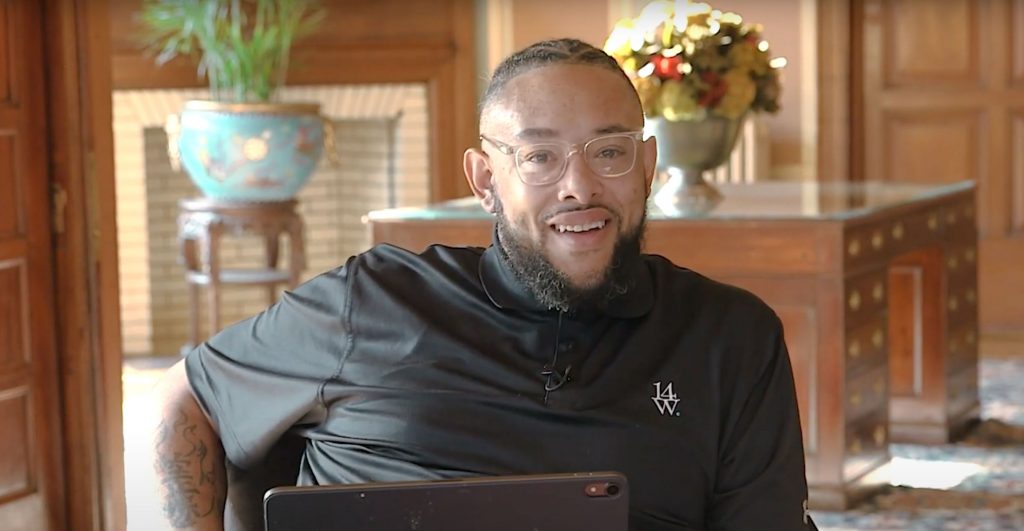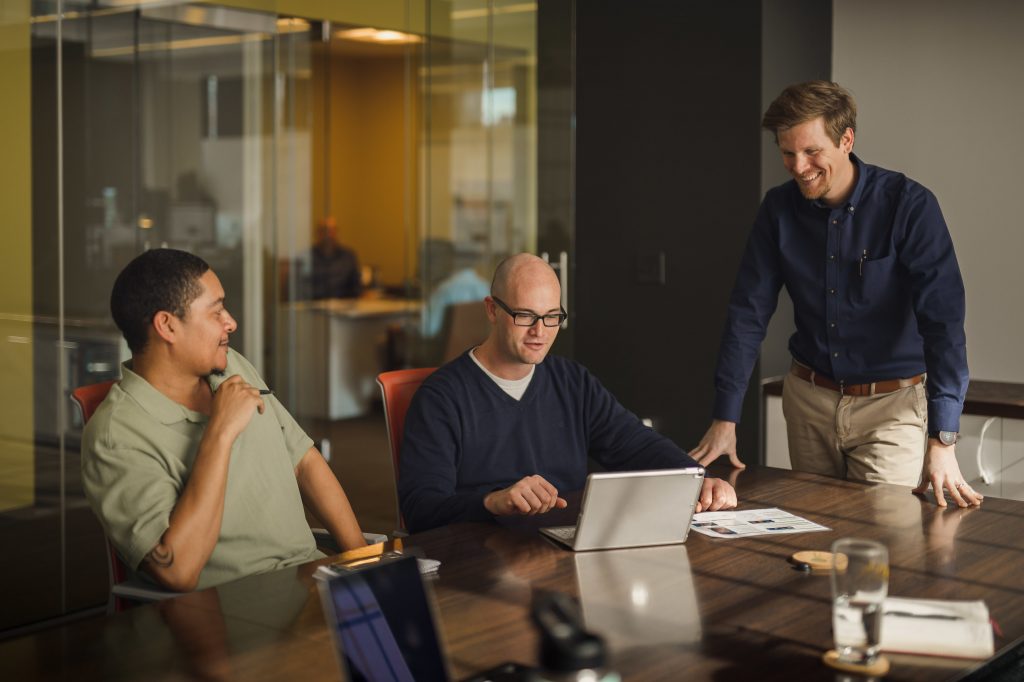VIDEO | Why Agile Transformation is Right For 14 West
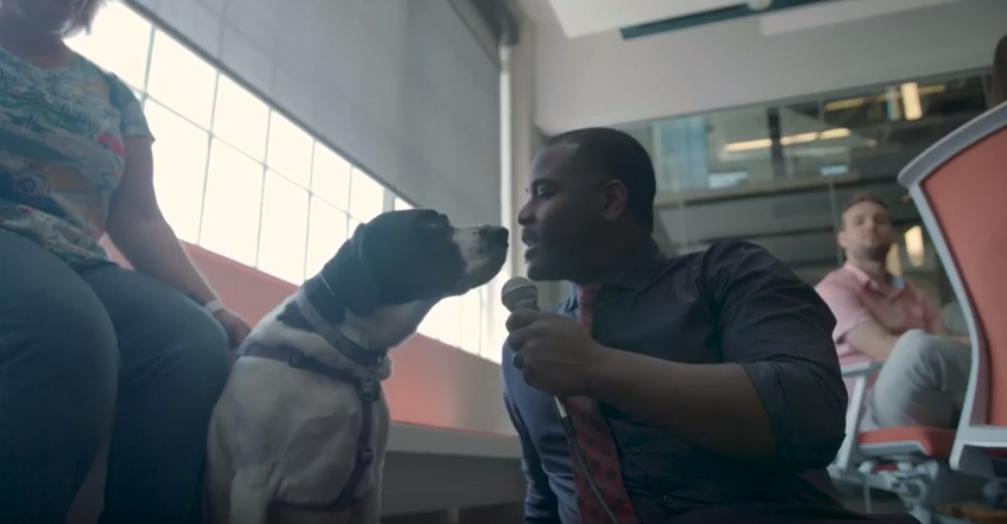
“Fail Fast” & “Ready, Fire, Aim” are phrases you hear early and often in your career at 14 West. And while they’re said with a certain amount of tongue in cheek, there is truth to them.
Many of the businesses we support are based on ideas, and those ideas are not always fully formed – or even good – but doing something and learning from it is the only way we can realize value from those ideas.
For me, this has always been the conflict between the creative people and the technical people. Technical people like to have things organized and planned carefully… and rightly so. We get yelled at when stuff goes down or fails to perform to expectations. So how do we work in a way that operates at the speed of business?
The other day I was explaining to a colleague how we (“WesTech”) fit into our client’s business.
I used the simple diagram below to put things into context…
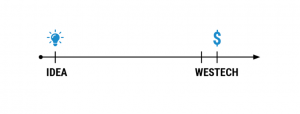
Generally speaking, when one of our clients has a new idea, the creative people are involved. Sometimes just one or two people. Sometimes everyone. The idea takes some time to develop and they work together to flesh it out. The researchers and analysts do a ton of research and analysis to develop their hypothesis. The copywriters work their magic transforming very complex information into engaging, can’t-get-enough content. And the marketers dream up creative ways to get that content in front of as many of the right people as possible…sometimes involving technology that is new or unproven.
This process could take weeks or even months – and when it’s ready, it’s all-hands-on-deck. When the operations folks are asked to make it all happen, they scramble to align all the pieces and ensure they can report on the success of the idea. Then we – the technical people – come in. From the diagram above you can clearly see we’re right at the tail end. The client wants this great idea out immediately and we’re only just getting familiar with the task at hand.
You see the problem.
So, how do we address it?
Well for one, we build stronger relationships with our clients. If we are truly seen as a strategic partner and not a barrier to progress, the belief is that they will want to engage with us earlier in the process. But that’s a story for another day.
Today, I want to tell you why our decision to embrace Agile as a way of working at “WesTech” is such a major part of this solution. The move to Agile is not being made because it’s trendy, or what the cool kids are doing, but because it will help us deliver better solutions. By working this way, we will be able to deliver higher quality software faster and with more innovative features. Here’s how.
QUALITY, RISK, AND DOING THE RIGHT THINGS
Not only do we want to deliver solutions that perform well, are robust, and scalable…we also want to deliver quality in the form of the right things. The diagram below perfectly illustrates how Agile can help us do this…
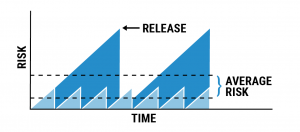
In traditional waterfall methodologies, the time between an idea (defining the requirement) and delivery is long. By the time the requirement is delivered, the idea could have moved on, or been beaten to market by something else.
By moving in smaller, more rapid steps, we greatly reduce the risk of doing the wrong thing and improve our quality by working in smaller, more manageable chunks. If something goes wrong, it’s far easier to pick apart a small deployment than a large one that took months to build.
BRINGING “READY, FIRE, AIM” TO THE TECHNOLOGY WORLD
In business, we must accept that our ideas aren’t always perfect. Why should our software be any different? By working in iterations, we’re able to constantly tweak things and close in on our target to avoid the big misses.
If you don’t know where your target is exactly, it makes sense to take smaller steps and assess your progress after each iteration, rather than big bold swings in the hopes of a hole in one (but in reality, you keep missing by miles).
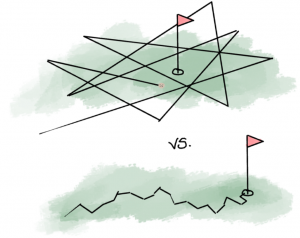
DEALING WITH SHIFTING PRIORITIES AND THE UNEXPECTED
When we apply the first diagram above to our world, it’s easy to see how our clients can so often demand we change direction just for them. The idea has been germinating for so long they can’t wait to get it to market.
The diagram below describes how we can handle this and position ourselves better to react to our customers.
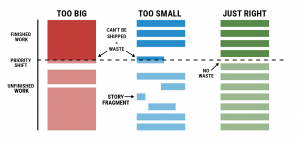
Working in big batches (left) means we can’t change direction mid-stream without a ton of waste. Work that’s ongoing may be lost and all that time wasted. By working in batches that are too small we waste time on context shifting and don’t deliver at the rate we could.
By right-sizing our work and managing our backlogs effectively, we can deliver work consistently while remaining flexible enough to react to our clients’ needs.
This is an investment not just in our business, but in our people. This transition will take time, money, and resources…. But if it goes as planned, there’s no stopping us.
